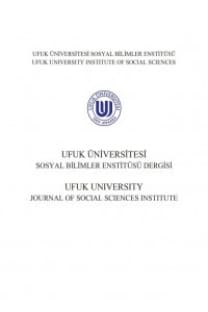Yakın Çevre Doktrini Ve Orta Asya Cumhuriyetlerindeki Rus Azınlıklar
SSCB’nin dağılması ile birlikte önemli oranda Rus azınlık Orta Asya cumhuriyetlerinin sınırları içerisinde kalmıştır. Rus azınlıklar olgusu Rusya ile Orta Asya cumhuriyetleri arasında vuku bulan siyasi, sosyo-ekonomik ve kültürel gelişmeleri hem etkilemiş hem de bu ilişkilerden etkilenmiştir. Rusya’nın yurtdışındaki Rusların Yakın Çevre Doktrini bağlamında korunacağına yönündeki açıklamaları bünyesinde ciddi oranda etnik Rus’un yaşadığı cumhuriyetlerde tedirginlik yaratmıştır.Orta Asya’daki Rus azınlıklar kimliklerini tanımlamak için iki anlamlı ata toprağı-anavatan kavramını kullanmaktadır. Yani Rusya, Rus azınlıklar için göç etmeseler de sahip olamasalar da kendi atalarının topraklarını oluşturmaktadır. Buna karşın doğup büyüdükleri Orta Asya cumhuriyetleri kendi anavatanlarını oluşturmaktadır. Makalede her ülkenin özgül şartları içerisinde Rus azınlıklara ilişkin gelişmeler bütün yönleriyle irdelenmeye çalışılmıştır
Anahtar Kelimeler:
Yakın Çevre Doktrini, Rus azınlıklar, Rusya, Orta Asya cumhuriyetleri, anavatan, ata toprağı
NEAR ABROAD DOCTRINE AND THE RUSSIAN MINORITIES IN THE CENTRAL ASIA
After USSR’s collapse a lot of Russian minorities stayed within the bourdaries of Central Asian republics. The Russian minorities not only affected the political, socio-economical and cultural relations between Russia and the Central Asian republics but also they were affected by these relations. Russia declared that the Russians will be protected in the context of Near Abroad Doctrine. This declaration caused to disquiet the states where the ethnic Russians live. The Russian minorities lived in the Central Asia use two concepts like “lands of anchestors and motherland” to define their identity. That is, Russia represents their own lands of anchestors for the ethnic Russians which live abroad even though they do not live in Russia. However, the Central Asian republics represent their own motherland for the ethnic Russian. So in this article all the developments about the Russian minorities were tried to analyse within all the dimensions
Keywords:
Near Abroad Doctrine, Russian minorities, Russia, the Republics of the Central Asia, land of anchestor, motherland.,
___
- Anderson, J. (1997). The International Politics of Central Asia. Manchester: Manchester University Press. Atkin, M. (1997). Tajikistan: Reform, Reaction and Civil War. (ed: Ian Bremmer ve Ray Taras). New States New Politics: Building the Post-Sovyet Nations. Cambridge: Cambridge Universty Press. Blank, S. (1994). Soviet Reconquest of Central Asia. (ed: Hafeez Malik). Central Asia. New York: St. Martin’s Press.
- Fierman, W. (1997). Political Development in Uzbekistan: Democratization?. (ed: Karen Dawisha ve Bruce Parrott). Conflict, Cleavage and Change in Central Asia and the Caucausus. Cambridge: Cambridge University Press.
- Fuller, G. E. (1992). Central Asia: The New Geopolitics. California: RAND National Defense Research Institute.
- Greason, G. (1997). Uzbekistan: The Politics of National Independence. (ed: Ian Bremmer ve Ray Taras). New States New Politics: Building the Post-Sovyet Nations. Cambridge: Cambridge Universty Press.
- Kuzmin, A. I. (2001). Tajikistan: The Causes and Lessons of the Civil War. (ed: Alexei Vassiliev). Political and Economic Challenges in the Post-Soviet Era. Westbourne Grove: Saqi Books.
- Matveeva, A. (1999). Democratization, Legitimacy and Political Change in Central Asia. International Affairs (75/1). ss. 23-44.
- Megoran, N. (2002). The Borders of Eternal Friendship?: The Politics and Pain of Nationalism and Identity along the Uzbekistan-Kyrgyzstan Ferghana Valley 1999-2000 (doktora tezi). Cambridge: Sidney Sussex College.
- Nogayeva, A. (2011). Orta Asya’da ABD, Rusya ve Çin: Stratejik Denge Arayışları. Ankara: USAK Yayınları.
- Ochs, M. (1997). Turkmenistan: The Quest for Stability and Control. (ed: Karen Dawisha ve Bruce Parrott). Conflict, Cleavage and Change in Central Asia and the Caucausus. Cambridge: Cambridge University Press.
- Olcott, M. B. (1997a). Kazakhstan: Pushing for Eurasia. (ed: Ian Bremmer ve Ray Taras). New States New Politics: Building the Post-Sovyet Nations. Cambridge: Cambridge Universty Press. Olcott, M. B. (1997b). Democratization and the Growth of Political Participation in Kazakhstan. (ed: Karen Dawisha ve Bruce Parrott). Conflict, Cleavage and Change in Central Asia and the Caucausus. Cambridge: Cambridge University Press.
- Özcan, S. A. (2005). Bir Sovyet Mirası: Rus Azınlıklar. İstanbul: Küre Yayınları.
- Petrov, N. I. ve Gafarly, M. S. (2001). Kazakhstan: The Course Towards Political Stability. (ed: Alexei Vassiliev). Political and Economic Challenges in the Post-Soviet Era. Westbourne Grove: Saqi Books.
- Peyrouse, S. (2008). The Russian Minority in Central Asia: Migration, Politics and Language. Woodrow Wilson InternationalCenter for Scholars (The Kenan Institute). Occasional Papers (297). ss. 1-33.
- Tishkov, V. (1997). Ethnicity, Nationalism and Conflict After the Soviet Union. Londra: SAGE Publications.
- Yapıcı, M. İ. (2010). Rus Dış Politikasını Oluşturan İç Etkenler. Ankara: USAK Yayınları.
- http://www.eurasianet.org/departments/insightb/articles/eav082609a.shtml Tarihi: 22.10.2016
- Erişim http://www.eurasianet.org/node/62916 Erişim Tarihi: 22.10.2016
- http://kaganat.kg/orta-asyadaki-rus-nufusunda-buyuk-azalma/ Erişim Tarihi: 22.10.2016
- http://www.bilgesam.org/incele/1602/-rusya'da-nufusun-azalmasi-ve-guvenlik kaygilari/#.WFbhVYVOJMt Erişim Tarihi: 18.12.2016
- ISSN: 2146-7676
- Başlangıç: 2011
- Yayıncı: Ufuk Üniversitesi
Sayıdaki Diğer Makaleler
Sürdürülebilir Kentleşme Tartışmaları Ve Kent Hakkı
ERKEK BERBER-MÜŞTERİ İLETİŞİMİ: BERBER KOLTUKLARINDA HANGİ SIRLARI PAYLAŞIYORLAR!
Yeni Dünya Düzeninde Jeopolitiğin Değişen Konumu
Kamu Çalışanlarında E-Devlet Algısı: Karabük İli Örneği
Yahya FİDAN, Canan YILDIRAN, Aydın YILMAZER
Yöneticilerin İşyerindeki Başarısı Açısından Çalışan Davranışlarını Etkileyen Etmenler
Türkmen DERDİYOK, Esra Bilge DERDİYOK
#Yosoy132 Ve Meksika’da Devlet Şiddeti
Ayfer GENÇ YILMAZ, Onur AĞKAYA
Yakın Çevre Doktrini Ve Orta Asya Cumhuriyetlerindeki Rus Azınlıklar
